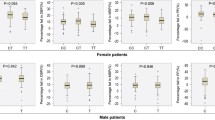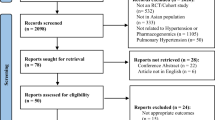Abstract
Objective
The antihypertensive effect of thiazide diuretics has recently been associated with genetic variation in the angiotensin I-converting enzyme (ACE), alpha-adducin (ADD1) and the G protein subunit β3 (GNB3). Analysis of short-term diuretic effects may provide insight into the mechanisms behind these findings.
Methods
A total of 103 male volunteers took 25 and 100 mg hydrochlorothiazide (HCT) after a placebo day, each. We measured volume, sodium, chloride, potassium, calcium excretion, blood pressure and heart rate.
Results
Excretion and cardiovascular parameters were highly constant between the 2 placebo days. The resting heart rate was 2–3 beats/minute (bpm) higher per ACE insertion allele on all 4 study days. The HCT-induced excretion of sodium, chloride and volume was independent of the genotypes. The additional potassium excretion induced by 100 mg HCT was 44±21, 33±27 and 16±26 mmol (mean±SD, p<0.001) in ACE II, ID and DD carriers and the same trend was observed after 25 mg HCT. As a second finding, the 100 mg HCT-induced calcium retention was 0.2±1.2, 0.7±0.8 and 1.7±2.1 mmol in ADD1 Gly/Gly, Gly/Trp and Trp/Trp carriers (p=0.002) and the same trend existed after 25 mg HCT.
Conclusion
The effects of genetic polymorphisms were stronger with the higher diuretic dose. ACE insertion allele carriers appeared to be more prone to hypokalaemia than deletion allele carriers. ADD1 Trp460 carriers may especially benefit from the calcium-sparing effect of thiazides. Both associations should be further studied in long-term treatment with thiazide diuretics.






Similar content being viewed by others
References
ALLHAT Officers and Coordinators for the ALLHAT Collaborative Research Group (2002) Major outcomes in high-risk hypertensive patients randomized to angiotensin-converting enzyme inhibitor or calcium channel blocker vs diuretic: the Antihypertensive and Lipid-Lowering Treatment to Prevent Heart Attack Trial (ALLHAT). JAMA 288:2981–2997
Vormfelde SV, Burckhardt G, Zirk A, Wojnowski L, Brockmoller J (2003) Pharmacogenomics of diuretic drugs: data on rare monogenic disorders and on polymorphisms and requirements for further research. Pharmacogenomics 4:701–734
Schelleman H, Stricker BH, De Boer A, Kroon AA, Verschuren MW, Van Duijn CM, Psaty BM, Klungel OH (2004) Drug-gene interactions between genetic polymorphisms and antihypertensive therapy. Drugs 64:1801–1816
Turner ST, Schwartz GL (2005) Gene markers and antihypertensive therapy. Curr Hypertens Rep 7:21–30
Bennett WM, McDonald WJ, Kuehnel E, Hartnett MN, Porter GA (1977) Do diuretics have antihypertensive properties independent of natriuresis? Clin Pharmacol Ther 22:499–504
Rejnmark L, Vestergaard P, Pedersen AR, Heickendorff L, Andreasen F, Mosekilde L (2003) Dose-effect relations of loop- and thiazide-diuretics on calcium homeostasis: a randomized, double-blinded Latin-square multiple cross-over study in postmenopausal osteopenic women. Eur J Clin Invest 33:41–50
Rejnmark L, Mosekilde L, Andreasen F (1998) Diuretics and osteoporosis (in Danish). Nord Med 113:53–59
LaCroix AZ, Ott SM, Ichikawa L, Scholes D, Barlow WE (2000) Low-dose hydrochlorothiazide and preservation of bone mineral density in older adults. A randomized, double-blind, placebo-controlled trial. Ann Intern Med 133:516–526
Beermann B, Groschinsky–Grind M (1980) Clinical pharmacokinetics of diuretics. Clin Pharmacokinet 5:221–245
Beermann B, Groschinsky–Grind M (1977) Pharmacokinetics of hydrochlorothiazide in man. Eur J Clin Pharmacol 12:297–303
Cambien F, Alhenc–Gelas F, Herbeth B, Andre JL, Rakotovao R, Gonzales MF, Allegrini J, Bloch C (1988) Familial resemblance of plasma angiotensin-converting enzyme level: the Nancy Study. Am J Hum Genet 43:774–780
Rigat B, Hubert C, Alhenc–Gelas F, Cambien F, Corvol P, Soubrier F (1990) An insertion/deletion polymorphism in the angiotensin I-converting enzyme gene accounting for half the variance of serum enzyme levels. J Clin Invest 86:1343–1346
Arnett DK, Davis BR, Ford CE, Boerwinkle E, Leiendecker–Foster C, Miller MB, Black H, Eckfeldt JH (2005) Pharmacogenetic association of the angiotensin-converting enzyme insertion/deletion polymorphism on blood pressure and cardiovascular risk in relation to antihypertensive treatment: the Genetics of Hypertension-Associated Treatment (GenHAT) study. Circulation 111:3374–3383
Sciarrone MT, Stella P, Barlassina C, Manunta P, Lanzani C, Bianchi G, Cusi D (2003) ACE and alpha-adducin polymorphism as markers of individual response to diuretic therapy. Hypertension 41:398–403
Glorioso N, Filigheddu F, Cusi D, Troffa C, Conti M, Natalizio M, Argiolas G, Barlassina C, Bianchi G (2002) alpha-Adducin 460Trp allele is associated with erythrocyte Na transport rate in North Sardinian primary hypertensives. Hypertension 39:357–362
Cusi D, Barlassina C, Azzani T, Casari G, Citterio L, Devoto M, Glorioso N, Lanzani C, Manunta P, Righetti M, Rivera R, Stella P, Troffa C, Zagato L, Bianchi G (1997) Polymorphisms of alpha-adducin and salt sensitivity in patients with essential hypertension. Lancet 349:1353–1357
Turner ST, Chapman AB, Schwartz GL, Boerwinkle E (2003) Effects of endothelial nitric oxide synthase, alpha-adducin, and other candidate gene polymorphisms on blood pressure response to hydrochlorothiazide. Am J Hypertens 16:834–839
Siffert W (2005) G protein polymorphisms in hypertension, atherosclerosis, and diabetes. Annu Rev Med 56:17–28
Turner ST, Schwartz GL, Chapman AB, Boerwinkle E (2001) C825T polymorphism of the G protein beta(3)–subunit and antihypertensive response to a thiazide diuretic. Hypertension 37:739–743
Feng Y, Niu T, Xu X, Chen C, Li Q, Qian R, Wang G, Xu X (2002) Insertion/deletion polymorphism of the ACE gene is associated with type 2 diabetes. Diabetes 51:1986–1988
Haszon I, Friedman AL, Papp F, Bereczki C, Baji S, Bodrogi T, Karoly E, Endreffy E, Turi S (2002) ACE gene polymorphism and renal scarring in primary vesicoureteric reflux. Pediatr Nephrol 17:1027–1031
Isaac G, Holland OB (1992) Drug-induced hypokalaemia. A cause for concern. Drugs Aging 2:35–41
Gennari FJ (1998) Hypokalemia. N Engl J Med 339:451–458
Velazquez H (1987) Thiazide diuretics. Ren Physiol 10:184–197
Cruz DN (2001) The renal tubular Na–Cl co-transporter (NCCT): a potential genetic link between blood pressure and bone density? Nephrol Dial Transplant 16:691–694
Legroux-Gerot I, Catanzariti L, Marchandise X, Duquesnoy B, Cortet B (2004) Bone mineral density changes in hypercalciuretic osteoporotic men treated with thiazide diuretics. Joint Bone Spine 71:51–55
Schoofs MW, van der Klift M, Hofman A, de Laet CE, Herings RM, Stijnen T, Pols HA, Stricker BH (2003) Thiazide diuretics and the risk for hip fracture. Ann Intern Med 139:476–482
Schlienger RG, Kraenzlin ME, Jick SS, Meier CR (2004) Use of beta-blockers and risk of fractures. JAMA 292:1326–1332
Schunkert H, Hense HW, Doring A, Riegger GA, Siffert W (1998) Association between a polymorphism in the G protein beta3 subunit gene and lower renin and elevated diastolic blood pressure levels. Hypertension 32:510–513
Lee SY, Maniak PJ, Rhodes R, Ingbar DH, O’Grady SM (2003) Basolateral Cl-transport is stimulated by terbutaline in adult rat alveolar epithelial cells. J Membr Biol 191:133–139
Velazquez H, Silva T (2003) Cloning and localization of KCC4 in rabbit kidney: expression in distal convoluted tubule. Am J Physiol Renal Physiol 285:F49–F58
Author information
Authors and Affiliations
Corresponding author
Rights and permissions
About this article
Cite this article
Vormfelde, S.V., Sehrt, D., Bolte, D. et al. Hydrochlorothiazide efficacy and polymorphisms in ACE, ADD1 and GNB3 in healthy, male volunteers. Eur J Clin Pharmacol 62, 195–201 (2006). https://doi.org/10.1007/s00228-005-0081-z
Received:
Accepted:
Published:
Issue Date:
DOI: https://doi.org/10.1007/s00228-005-0081-z




